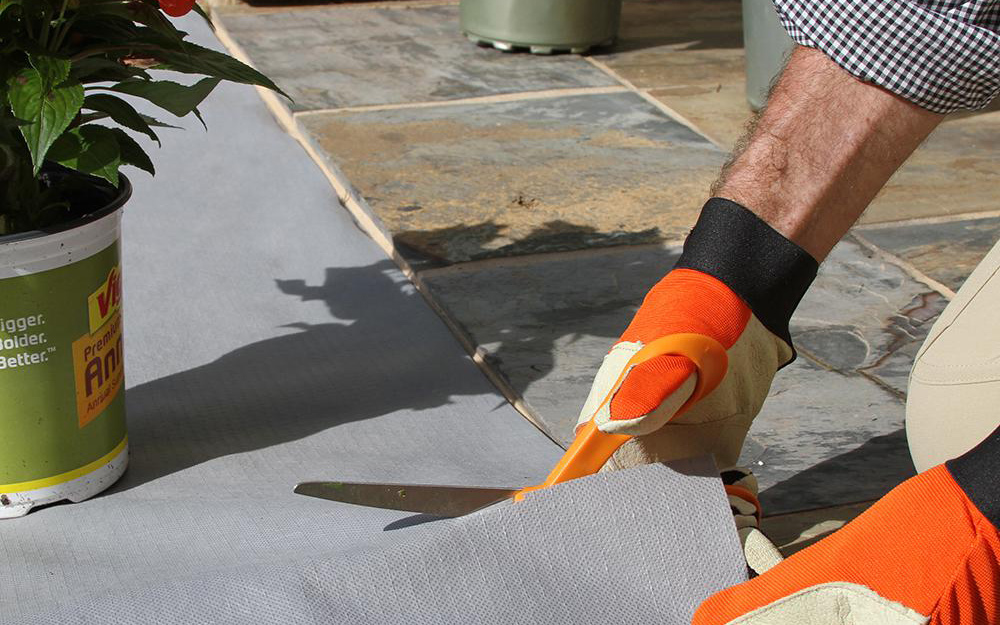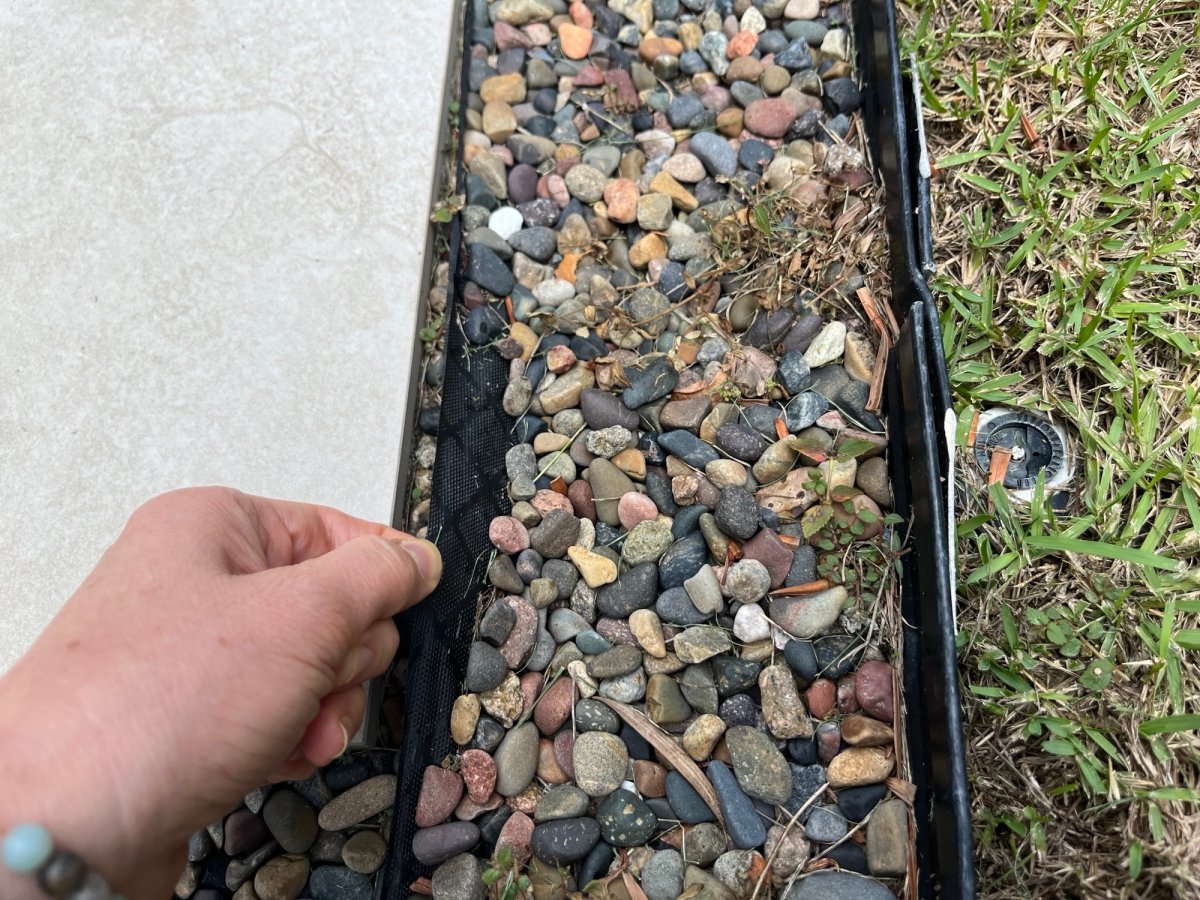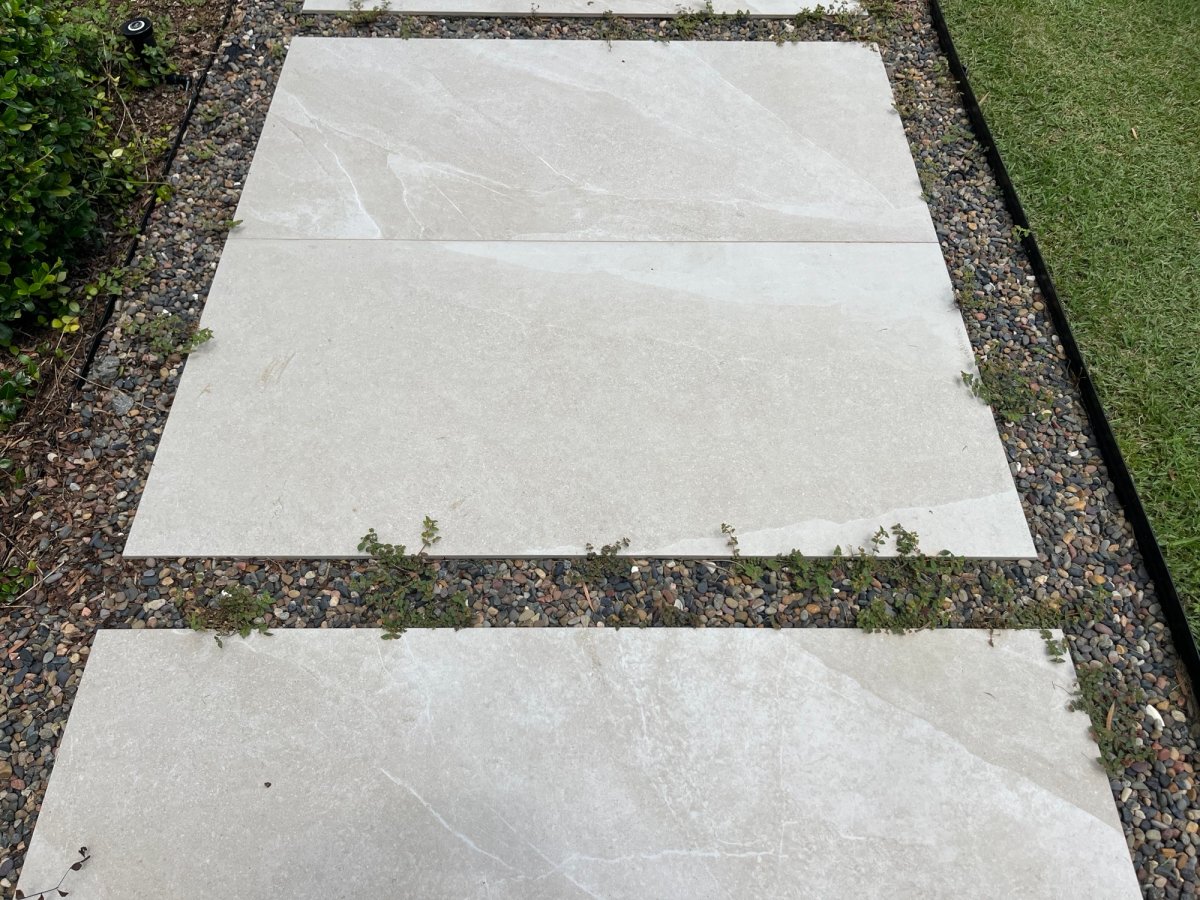

We may earn revenue from the products available on this page and participate in affiliate programs. Learn More ›
While most people view weeding as a cumbersome chore, I actually enjoy pulling weeds sprouting in my lawn. I find the entire process therapeutic. It gets me outside connecting to nature; lets me practice mindfulness as I focus on the task at hand; and I love the soothing, satisfying sensation that comes along with extracting a weed completely out of the ground from its root.
For the past 2 years, I’ve been tackling weeds, including along the paver pathway in my backyard. Shockingly, my husband just told me I should not have been pulling weeds all this time from that area since there is landscape fabric underneath the pebbles framing the pavers. He said it can trigger even more weed growth.
To better understand this faux pas, I contacted some landscaping experts to fill me in on why pulling weeds through landscape fabric is a bad idea and what we can do moving forward.
What is landscape fabric?
Also referred to as weed barrier fabric, weed block fabric, weed control fabric, and woven weed barrier, landscape fabric is a tightly woven material made from polyester, polyethylene, polypropylenes, or recycled plastic designed to minimize—and hopefully prevent—weed growth without using chemicals like pesticides. While it blocks out sunlight to discourage weed growth, perforated holes in the material still allow moisture and air to seep through.
Our landscaper recommended installing landscape fabric under the gravel that outlines a pathway made of pavers in our backyard. It’s recommended to use landscape fabric under inorganic materials like gravel, rock, or sand and in areas where you don’t want any plants to grow, such as under a deck or pavers like we have. The fabric acts as a shield to stop weed roots from growing through the gravel, decreasing the need to pull weeds by hand.

Why do weeds grow through landscape fabric?
So, if landscape fabric is supposed to prevent weeds from growing, why are they popping up all around my paver pathway? As it turns out, weeds can still grow through landscape fabric because soil, mulch, and organic matter collect on top of the fabric over time, says Tony Hoang, owner of H&J Landscaping in Fremont, California. “Seeds settle in these layers, germinate, and find tiny gaps where roots can penetrate. Once they latch onto sunlight and moisture, they break through.”
Although the fabric slows down weed growth, it doesn’t stop it entirely. Much of the fabric’s effectiveness depends on whether it was installed correctly, which means the edges need to be sealed, sections should overlap, and the fabric needs to be secured in place using landscape staples. It’s also critical to remove all weeds and undesirable vegetation before laying down the landscape fabric. Finally, landscape fabric doesn’t last forever; after a few years, it can get too old and damaged from UV degradation and general wear and tear.
Avoid pulling weeds through the fabric.
Another major problem, which I discovered first-hand, is that pulling weeds through landscape fabric can cause an unwelcome cycle of weed growth. “Weed pulling through the fabric can exacerbate the problem by creating holes, attracting more weeds, and compromising the barrier,” explains Samuel Davis, horticulturist and CEO of Handy Gardeners in the United Kingdom.
Pulling weeds from above often tears the fabric and creates larger openings for new seeds to sprout, adds Hoang. “It also disrupts the soil below, releasing dormant seeds that had been buried deep.” Over time, this makes the weed problem worse. “A better approach is to cut the weeds at the base or smother them instead of pulling them from the root.”

These long-term fixes can help.
Fortunately, replacing the entire landscape fabric after I’ve been pulling weeds through it isn’t necessary, according to Hoang and Davis. Instead, they recommend focusing on natural solutions. If mulch covers the fabric, adding a fresh layer of coarse mulch or wood chips 2 to 3 inches thick can block sunlight and suppress sprouting weeds, they say. “When dealing with stubborn weeds, spot-treat them with boiling water or vinegar mixes rather than toxic chemicals,” recommends Davis.
Since we have gravel on top of our landscape fabric, we’ll be using a safe, homemade weed killer consisting of white vinegar, Epsom salt, and liquid dish soap. Hopefully, this will do the trick.
